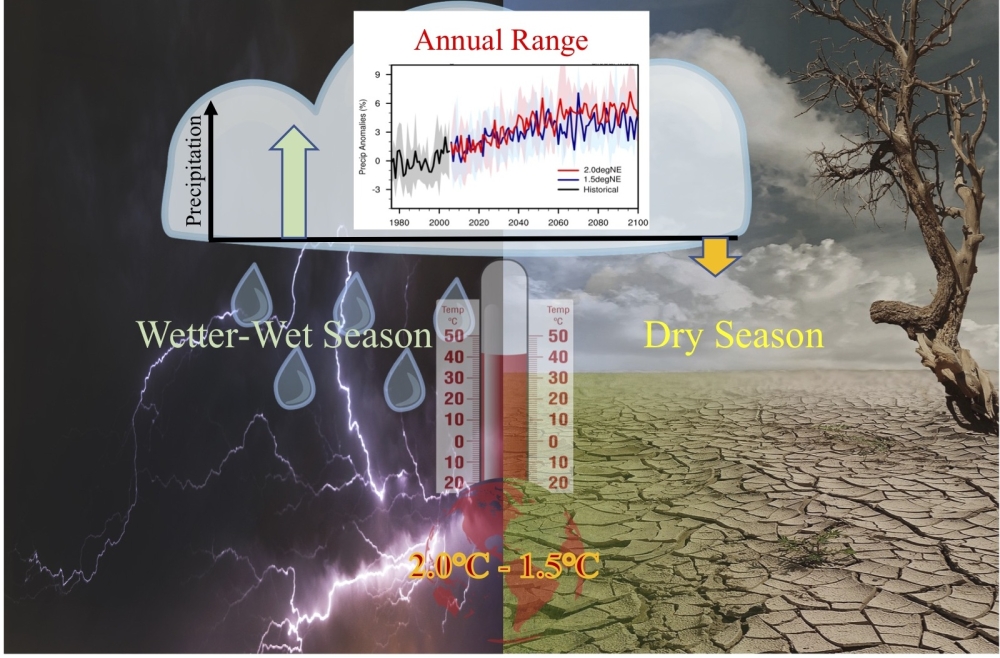The Paris Agreement in 2015 proposed a target to limit global warming to less than 2℃ and pursue efforts to limit warming to less than 1.5℃. Since then, great effort has been devoted to exploring the impacts of the 1.5℃ and 2℃ warming scenarios. A recent work published in Earth’s Future by a team of researchers from the Institute of Atmospheric Physics at the Chinese Academy of Sciences (IAP/CAS) finds that the seasonal cycle of precipitation is likely to enhance at stabilized 1.5℃ and 2℃ warming scenarios.

The schematic of the precipitation in the wet and dry seasons and the annual range with the additional 0.5℃ of warming. (Image by CHEN Ziming)
"Based on the output data of the Community Earth System Model low-warming experiment, we conclude that the enhancement is mainly caused by the increase in water vapor," said CHEN Ziming, the first author of the study and a doctoral student from the IAP/CAS.
The intensity of seasonal cycle is defined as the difference in precipitation between wet and dry seasons, representing the contrast of precipitation within a year. The wet and dry seasons were usually fixed as June to August and December to February, respectively, in the Northern Hemisphere and vice versa in the Southern Hemisphere. Neither the spatial distinction nor the temporal shifts in the wet and dry seasons have previously been considered.
"In our study, the intensity of the seasonal cycle is represented by the difference between mean precipitation in the wet and dry seasons for different regions and for each year," said CHEN.
CHEN, along with collaborators in the IAP/CAS, finds that based on the above metric, the intensity of seasonal cycle would enhance by 3.90% and 5.27% under 1.5℃ and 2℃ warming. Under the additional 0.5℃ of warming, a pronounced enhancement in seasonal cycle occurs over 22% of the land regions. The enhancement is associated with the enhanced precipitation during wet season, caused by thermodynamic responses due to the increased moisture. It indicates that the contrast between the wet and dry seasons would become stronger, resulting in a more uneven distribution of freshwater resources within a year. The probability of flooding would increase in the wet season.
"This study emphasizes the pronounced enhancement in seasonal cycle occur over land regions associated with the additional 0.5℃ warming, despite the insignificant increases in the annual precipitation," added CHEN. "So though the number in temperature seems small, 0.5℃ still matters."
###
The work was supported by National Natural Science Foundation of China and the National Key Research and Development Program of China.
Reference:
Chen, Z., and coauthors. (2020). Projected changes in the annual range of precipitation under stabilized 1.5°C and 2.0°C warming futures. Earth's Future, 8, e2019EF001435. https://doi.org/10.1029/2019EF001435
Media contact: Ms. LIN Zheng, jennylin@mail.iap.ac.cn
